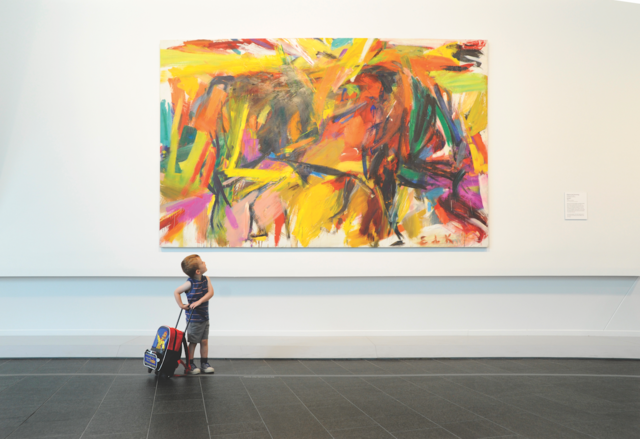The Local newsletter is your free, daily guide to life in Colorado. For locals, by locals.
1. When the Denver Art Museum acquired “Bullfight” in 2012, the canvas was rippled and lumpy after having spent years in a tube inside de Kooning’s Hamptons, New York, studio. After securing one side of the painting, conservator Pam Skiles used canvas pliers to firmly pull on the other side, slowly stretching the painting for three hours until it lay flat.
2. Chunks of paint had started to pull away from the canvas—but hadn’t completely detached—so Skiles spent days securing the clumps with conservation-grade glue. (Both acidic and basic glues can damage paint.)
3. To remove dirt and dust from “Bullfight,” Skiles employed distilled water and rolled the grime away over the course of 10 to 12 hours with huge, homespun Q-tips she made by wrapping cotton around bamboo skewers.
4. Skiles—whose master’s in conservation required extensive chemistry work—devoted 10 to 15 hours to filling in spots where paint had flaked off. Through meticulous paint mixing, vast knowledge of de Kooning’s palette, and a trained eye, Skiles was able to closely match the original hues. But she used aldehyde resin rather than oil so future conservators can differentiate between her paint and the original.

5. Skiles added a layer of batting and foam padding between the canvas and the back board so the massive six-by-11-foot painting is supported and insulated from friction when hung on a gallery wall.









